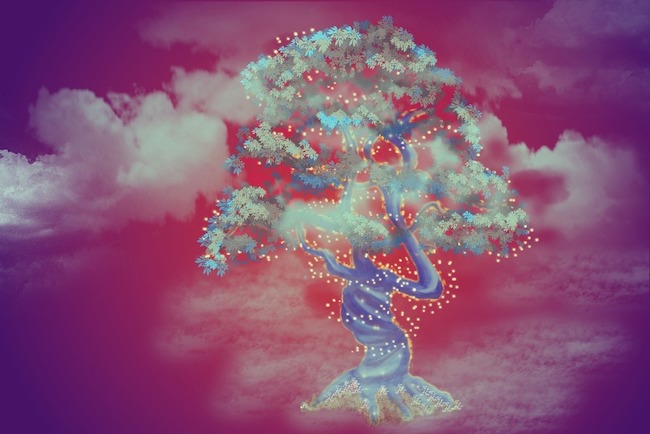Tutto ciò che circonda la quotidianità, i luoghi all’interno dei quali l’essere umano si muove, spesso persino dimenticando di osservarli davvero, rappresenta un intenso spunto di riflessione e di ispirazione per tutti quegli artisti la cui sensibilità ha bisogno di andare in profondità, di porsi in posizione di ascolto per estrapolare e interpretare quanto senza la loro osservazione potrebbe rimanere in silenzio, celato e trascurato. L’approccio rappresentativo in questo caso ha bisogno di attingere alla realtà osservata per poi portarla verso il mondo intimo delle sensazioni, di quella connessione con un’interiorità che ha bisogno di trovare il proprio canale espressivo. La protagonista di oggi unisce questa particolare inclinazione a prestare attenzione all’invisibile a una tendenza sperimentatrice che la spinge a misurarsi non solo con le tecniche più tradizionali bensì anche con i nuovi linguaggi ormai divenuti paralleli a quelli più usuali.
Verso la fine del Diciannovesimo secolo, prima che i venti di innovazione travolgessero il mondo dell’arte addirittura stravolgendo tutte le regole accademie fino a quel momento basi irrinunciabili alla manifestazione espressiva, emerse in Francia un movimento pittorico che si pose come obiettivo principale quello di lasciar emergere in superficie tutta quella spiritualità che nel precedente Impressionismo era stata ignorata per dare la precedenza alla bellezza oggettiva priva del filtro del soggetto esecutore di un’opera, e che nel Neoimpressionismo invece era esclusa per esplorare l’osservato da un punto di vista più analitico e meno emozionale. Sebbene il Simbolismo, questo il nome della nuova corrente artistica, fosse ancora lontano dalle esplosioni interiori e cromaticamente improbabili del successivo Espressionismo, apportò in ogni caso uno sguardo differente alla realtà, poiché tutto era filtrato dalla spiritualità, dal sentire dell’autore della tela che interpretava, attraverso il proprio punto di vista, quelle energie che costantemente correvano, si susseguivano e si assecondavano al soggetto e poi emergevano nella raffigurazione attraverso forme, idee e simboli con i quali sintetizzare la percezione. Le opere di Gustave Moreau, prevalentemente legate alla religione o alla sfera mitologica, trasportavano l’osservatore nella dimensione soprannaturale, manifestando l’orientamento dell’artista a tralasciare l’approccio materiale della nuova società borghese per riprendere il contatto con il lato spirituale; parimenti Arnold Böcklin si spinse persino più oltre, affrontando nelle sue opere il mondo silenzioso dell’al di là, quell’universo inconoscibile, misterioso e proprio per questo pieno di fascino e stimolo all’interrogarsi sulla dimensione ultraterrena. E ancora, Felicien Rops andò invece verso la carnalità e la lussuria che contraddistingueva la vita dei poeti maledetti tra cui Charles Baudelaire, con cui ebbe una profonda amicizia; le sue opere uniscono simboli sessuali a immagini che evocano a volte riti blasfemi. Per finire con Odilon Redon che portò avanti due diverse produzioni artistiche, quella pittorica in cui ciò che emergeva in maniera quasi poetica in comunicazione con l’universo e l’essere umano era una natura delicata e melodica, e poi quella grafica nella quale emergeva l’aspetto più inquietante, l’osservazione più surreale costituita da occhi decontestualizzati e mostri spaventosi che liberavano il lato più visionario dell’artista, oltre che sconvolgenti opzioni della realtà. L’artista laziale Beatrice Buccella sceglie proprio il Simbolismo per raccontare tutto quel ventaglio di sensazioni che immortala attraverso la fotografia e che poi concretizza artisticamente misurandosi con diversi mezzi espressivi, dalla carta alla tela, dall’arte digitale all’acrilico passando per la china, e su differenti supporti che si adeguano non solo all’immagine scelta dall’artista per essere protagonista dell’opera bensì anche alla necessità di dare consistenza diversa alle emozioni narrate.
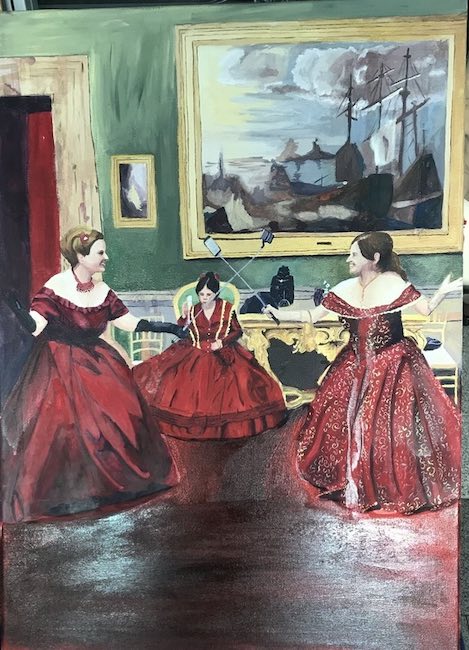
Appassionata di disegno fin da bambina, Beatrice Buccella intraprende gli studi artistici con approfondimenti verso il Graphic design, la Concept Art, l’Illustrazione e l’Architettura ma soprattutto, ciò che soddisfa la sua indole fortemente creativa è misurarsi con le sue emozioni che inizialmente narra attraverso la pittura ad acrilico e poi, negli ultimi tempi, sperimentando la tecnica dell’Arte digitale che le permette di immortalare con la macchina fotografica l’istante, il frammento che cattura la sua attenzione facendo vibrare le sue corde emotive, successivamente rielaborando e assecondandolo a quelle energie che si sono sollevate dal singolo dettaglio di esistenza per richiedere un approfondimento, una soggettivazione che prima deve raggiungere l’interiorità, poi stimolare le corde creative e infine concretizzarsi come opera d’arte.

La trasformazione grafica che la Buccella compie, diviene pertanto una vera e propria presa di coscienza della sensazione provata, un mezzo per spiegare senza dare una spiegazione, piuttosto lasciando all’osservatore la facoltà di interpretare quel sottile messaggio, quello stimolo alla riflessione che l’artista lascia senza condizionare; e così il suo mondo a volte magico, altre fiabesco, altre invece più concreto sulla realtà contemporanea, non può fare a meno di provocare quell’effetto incantatorio che il Simbolismo ha da sempre esercitato sul fruitore.
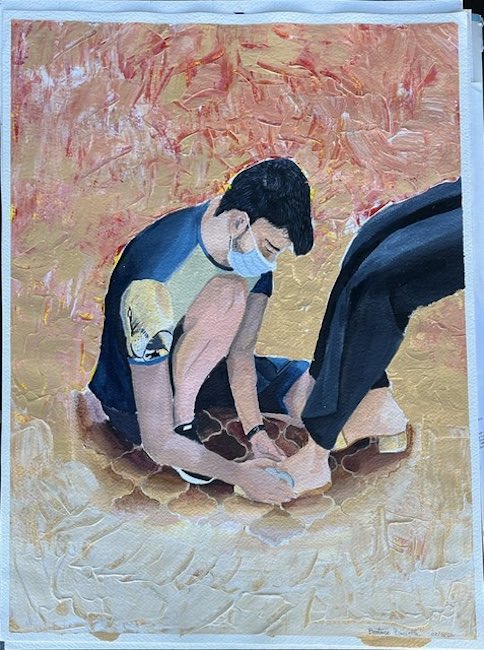
Il suo sguardo si sposta dall’essere umano alla natura, come se non fosse il soggetto a essere determinante bensì tutto ciò che induce l’artista a lasciar emergere la sua capacità di ascolto, l’approccio empatico che le consente di cogliere quel preciso momento in cui il soggetto non si sente osservato, oppure, nel caso della natura, di quell’incanto durante il quale la bellezza si unisce a una percezione superiore, a un messaggio subliminale che all’interno di essa si nasconde.

Nell’opera Bee, Beatrice Buccella descrive, attraverso la tecnica dell’acrilico, una pratica abituale per chi si occupa di raccogliere il prezioso miele delle api ma la amplifica ingigantendo il favo come se volesse sottolineare quanto la natura sia generosamente fonte di nutrimento, e quanto l’essere umano abbia da imparare in termini di accoglienza e di rispetto; il ragazzo protagonista dell’azione appare come un disturbatore casuale perché il suo abbigliamento non sembra essere quello di un professionista del settore. Dunque l’osservatore è spinto a domandarsi se l’uomo dell’opera non stia compiendo un furto, una depredazione indebita e potenzialmente pericolosa per l’equilibrio e la struttura del favo; il concetto è un’allegoria dell’atteggiamento dell’uomo contemporaneo che tende irresponsabilmente a sfruttare, appropriandosene, di tutti i benefici della natura spesso danneggiandola irrimediabilmente.

In Fall, opera realizzata in Arte digitale, l’artista sottolinea e amplifica il concetto dell’importanza dell’osservazione e di un rapporto equilibrato con la natura, andando oltre per studiarne il significato più profondo e filosofico che dalla cascata immortalata scaturisce; l’acqua infatti è purezza, è rigenerazione, è capacità di accettare la fuggevolezza delle cose e delle circostanze esattamente come suggerito da Eraclito in quel tutto scorre che implica un’accettazione degli eventi e la saggezza di comprendere l’importanza del non soccombere a essi bensì di restare sulla superficie dell’acqua per prendere in mano i cambiamenti e volgerli a proprio vantaggio. La cascata rappresenta dunque una caduta ma anche una rinascita, il trasformarsi in altro di diverso eppure ugualmente affine alla propria natura.
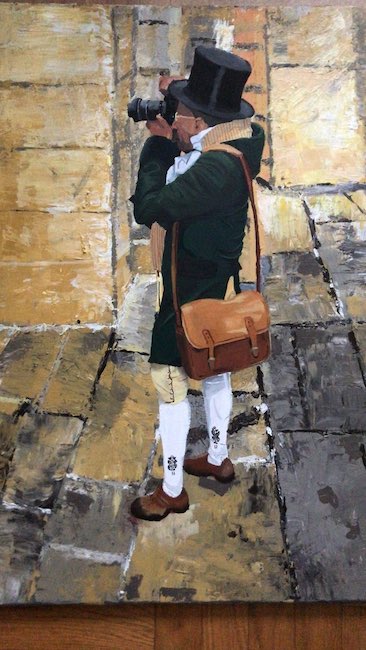
L’opera Time photographer invece è una metafora del concetto del tempo, tanto caro a molti grandi maestri del Novecento, che in Beatrice Buccella assume un significato nostalgico, manifestato nel fotografo in abiti antichi, come se fosse uscito direttamente dal passato per immortalare il mondo così come è oggi, diverso, sorprendente ma tutto sommato, dal punto di vista della curiosità e delle emozioni, simile; le differenze nel corso del tempo possono essere formali ma non sostanziali, in ciò che riguarda l’essere umano, questo sembra essere il messaggio dell’artista in questo poetico dipinto. Forse in qualche modo il fotografo è l’alter ego della Buccella che sceglie proprio la tecnica fotografica per catturare gli istanti che poi rielabora o riproduce attraverso le sue molteplici tecniche artistiche.
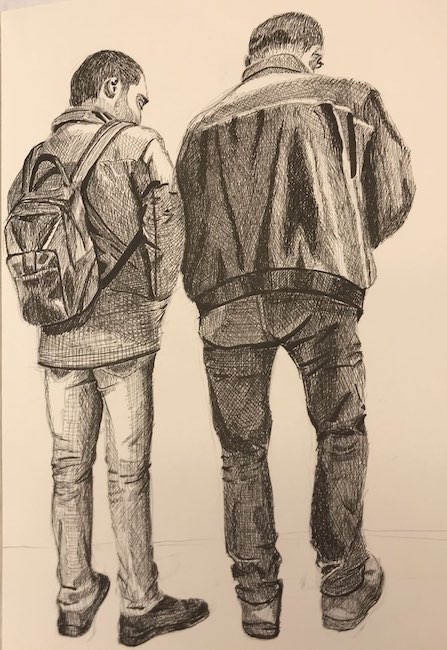
Ed è proprio partendo dai suoi scatti che ha realizzato l’opera su china Imprenditori, immortalando due sconosciuti osservati casualmente il cui atteggiamento naturale, eppure concentrato su un obiettivo professionale, l’ha incuriosita fino a desiderare di renderli protagonisti di un disegno. Beatrice Buccella ha iniziato recentemente il suo percorso espositivo tuttavia ha già al suo attivo la partecipazione a importanti mostre collettive in Italia e all’estero – Vienna, Los Angeles, Londra – e le sue opere sono state inserite in importanti riviste del settore.
BEATRICE BUCCELLA-CONTATTI
Email: bea.buccella@gmail.com
Sito web: https://www.beatricebuccella.com
Facebook: https://www.facebook.com/beatrice.buccella
Instagram: https://www.instagram.com/beartb4/
Beatrice Buccella’s Symbolism, between emotions and new expressive means to tell the subtle energies of reality
Everything that surrounds everyday life, the places within which human beings move, often even forgetting to really observe them, represents intense food for thought and inspiration for all those artists whose sensitivity needs to go deep inside, to place themselves in a listening position in order to extrapolate and interpret what without their observation might remain silent, concealed and neglected. The representational approach in this case needs to draw on the reality observed and then take it towards the intimate world of sensations, of that connection with an interiority that needs to find its own channel of expression. Today’s protagonist combines this particular inclination to pay attention to the invisible with an experimental tendency that drives her to measure herself not only with more traditional techniques but also with new languages that have now become parallel to the more usual ones.
Towards the end of the 19th century, before the winds of innovation swept through the art world overturning all the academic rules that had hitherto been the indispensable basis of expression, a pictorial movement emerged in France whose main objective was to bring to the surface all that spirituality that in previous Impressionism had been ignored in order to give precedence to objective beauty unfiltered by the subject executor of an artwork, and that in Neoimpressionism was excluded in order to explore the observed from a more analytical and less emotional point of view. Although Symbolism, this was the name of the new artistic current, was still far from the interior and chromatically improbable explosions of the later Expressionism, it brought in any case a different look at reality, since everything was filtered by spirituality, by the feeling of the author of the canvas who interpreted, through his own point of view, those energies that constantly ran, followed and went along with the subject and then emerged in the representation through forms, ideas and symbols with which to synthesise perception. The artworks of Gustave Moreau, predominantly linked to religion or mythology, transported the observer into the supernatural dimension, manifesting the artist’s tendency to leave behind the material approach of the new bourgeois society in order to get back in touch with the spiritual side; similarly, Arnold Böcklin went even further, addressing in his artworks the silent world of the beyond, that unknowable, mysterious universe and for this very reason full of fascination and stimulus to question the otherworldly dimension.
And again, Felicien Rops went instead towards the carnality and lust that characterised the lives of the accursed poets including Charles Baudelaire, with whom he had a deep friendship; his paintings combine sexual symbols with images that sometimes evoke blasphemous rituals. To end with Odilon Redon who carried out two different artistic productions, the pictorial one in which what emerged in an almost poetic manner in communication with the universe and the human being was a delicate and melodic nature, and then the graphic one in which emerged the most disturbing aspect, the most surreal observation consisting of decontextualised eyes and frightening monsters that released the most visionary side of the artist, as well as shocking options of reality. Latium artist Beatrice Buccella chooses Symbolism to narrate the whole range of sensations that she immortalises through photography and then realises artistically by measuring herself with different means of expression, from paper to canvas, from digital art to acrylics via Indian ink, and on different supports that adapt not only to the image chosen by the artist to be the protagonist of the artwork but also to the need to give different consistency to the emotions narrated. Passionate about drawing ever since she was a child, Beatrice Buccella embarked on artistic studies with a focus on Graphic Design, Concept Art, Illustration and Architecture, but above all, what satisfies her strongly creative nature is to measure herself against her emotions, which she initially narrates through acrylic painting and then, more recently, by experimenting with the technique of digital art that allows her to immortalise the instant with her camera, the fragment that captures her attention, making her emotional chords vibrate, then reworking and indulging those energies that have risen from the single detail of existence to require a deepening, a subjectivation that first has to reach the interiority, then stimulate the creative chords and finally materialise as a work of art. The graphic transformation that Buccella carries out, therefore, becomes a true awareness of the sensation experienced, a means of explaining without giving an explanation, rather leaving the observer the faculty to interpret that subtle message, that stimulus to reflection that the artist leaves without conditioning; and so her world, at times magical, at others fairytale-like, at others more concrete on contemporary reality, cannot help but provoke that enchanting effect that Symbolism has always exerted on the viewer. Her gaze shifts from the human being to nature, as if it were not the subject that was decisive but rather everything that induces the artist to let emerge her ability to listen, the empathic approach that allows her to grasp that precise moment in which the subject does not feel observed, or, in the case of nature, that enchantment during which beauty is united with a higher perception, with a subliminal message that is hidden within it.
In the artwork Bee, Beatrice Buccella describes, through the acrylic technique, a habitual practice for those who collect the precious honey from bees, but she amplifies it by enlarging the honeycomb as if she wanted to emphasise how generously nature is a source of nourishment, and how much the human being has to learn in terms of acceptance and respect; the boy protagonist of the action appears as a casual disturber because his clothing does not seem to be that of a professional in the field. Thus the observer is prompted to wonder if the man in the work is not committing a theft, an undue and potentially dangerous depredation of the balance and structure of the honeycomb; the concept is an allegory of the attitude of contemporary man who irresponsibly tends to exploit, appropriating, all the benefits of nature, often damaging it irreparably. In Fall, a work realised in digital art, the artist emphasises and amplifies the concept of the importance of observation and a balanced relationship with nature, going further to study the deeper and more philosophical meaning that flows from the immortalised waterfall; for water is purity, it is regeneration, it is the capacity to accept the fleeting nature of things and circumstances exactly as Heraclitus suggested in that everything flows, which implies an acceptance of events and the wisdom of understanding the importance of not succumbing to them but rather of remaining on the surface of the water in order to take hold of changes and turn them to one’s own advantage. The waterfall thus represents a fall but also a rebirth, the transformation into something different yet equally akin to one’s own nature.
The artwork Time photographer, on the other hand, is a metaphor for the concept of time, so dear to many great masters of the 20th century, which in Beatrice Buccella takes on a nostalgic meaning, manifested in the photographer in old clothes, as if he had come straight out of the past to immortalise the world as it is today, different, surprising but all in all, from the point of view of curiosity and emotions, similar; the differences over time may be formal but not substantial, in what concerns the human being, this seems to be the artist’s message in this poetic painting. Perhaps in some way the photographer is the alter ego of Bucella who chooses the photographic technique to capture moments that she then re-elaborates or reproduces through her many artistic techniques. And it is precisely from her shots that she created the artwork on India ink Entrepreneurs, immortalising two casually observed strangers whose natural attitude, yet focused on a professional lens, intrigued her to the point of wanting to make them the protagonists of a drawing. Beatrice Buccella has recently started her exhibition career, yet she has already participated in important group exhibitions in Italy and abroad – Vienna, Los Angeles, London – and her artworks have been included in important magazines.


